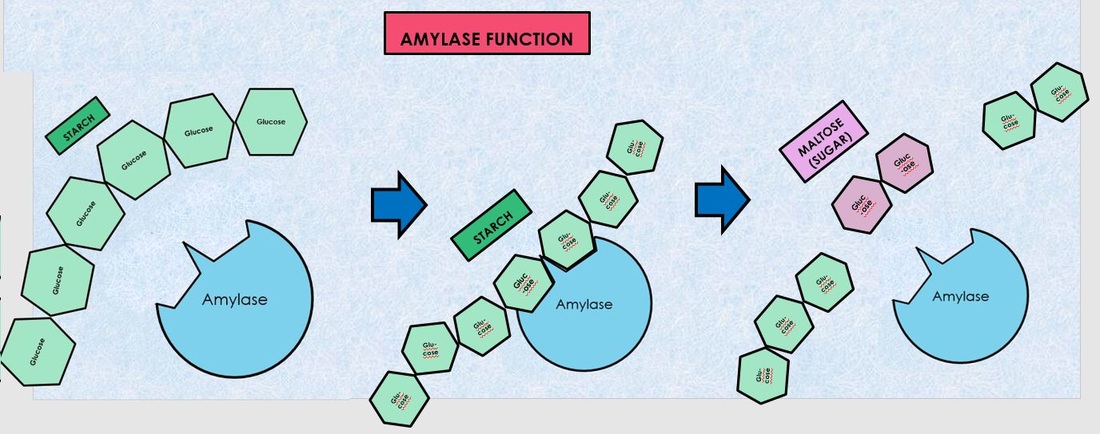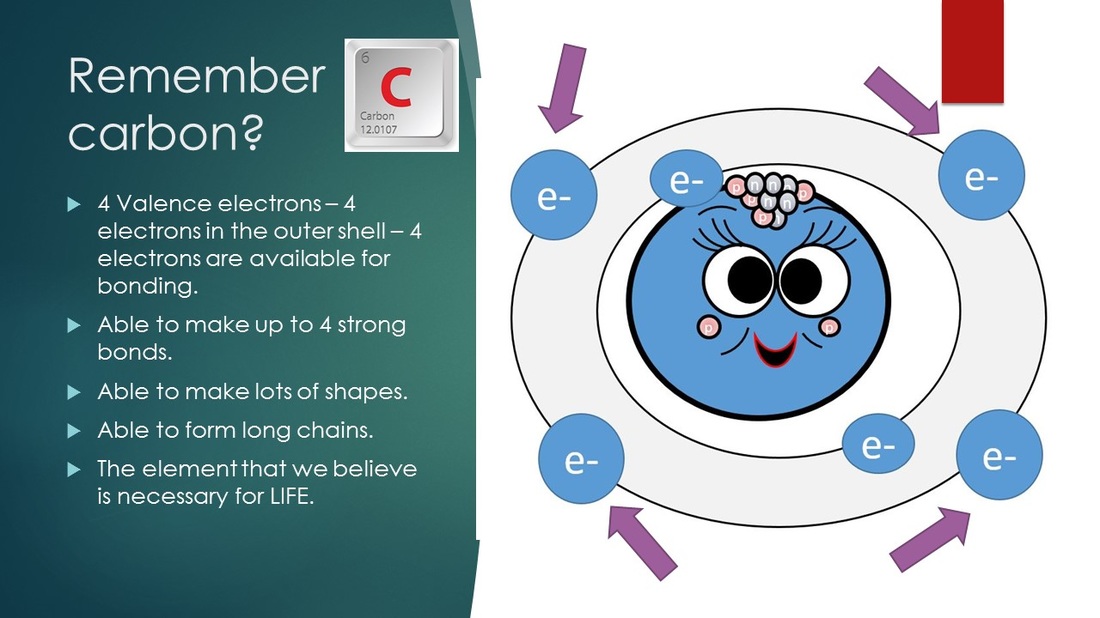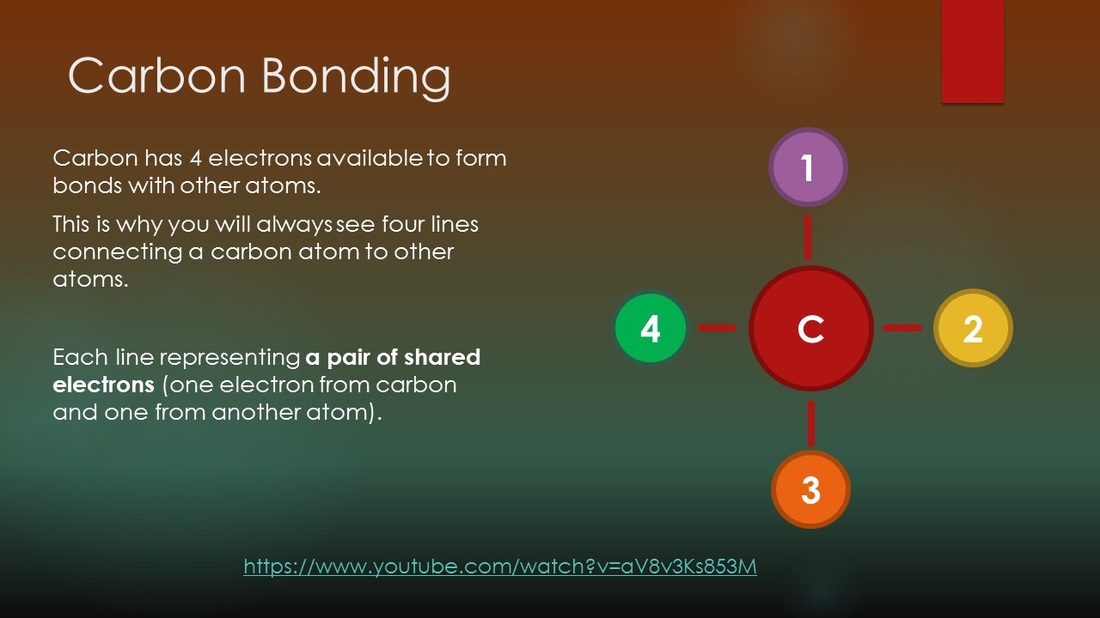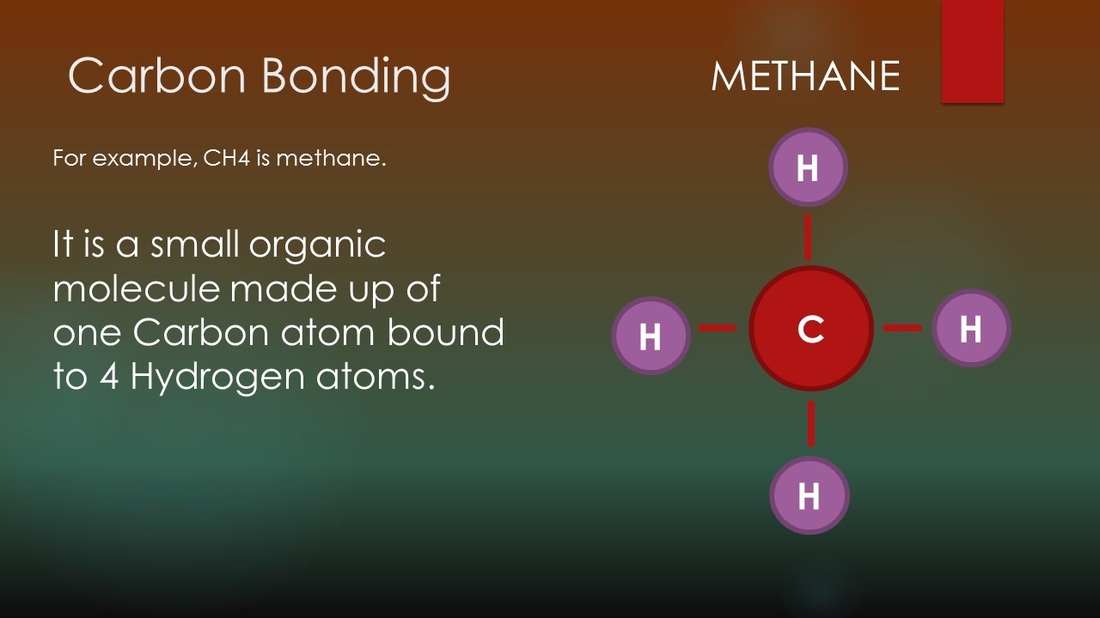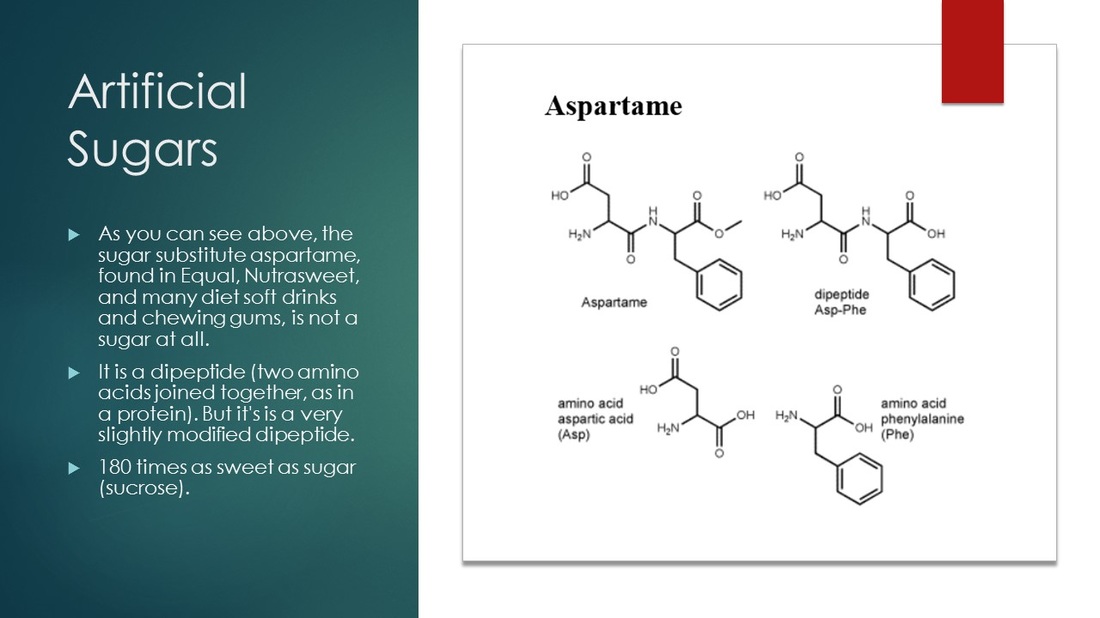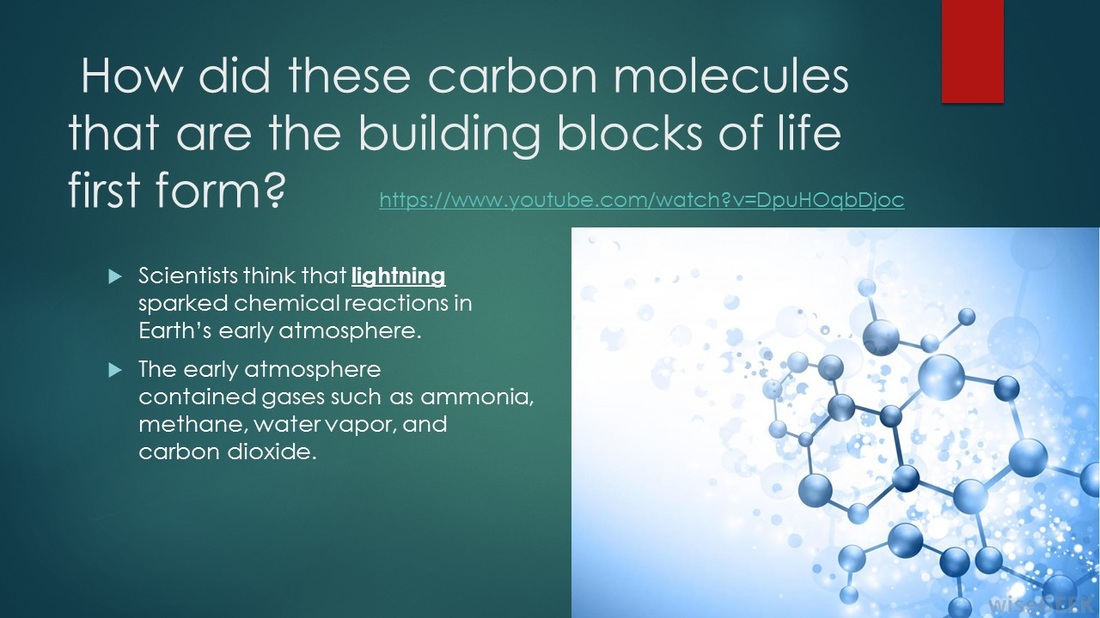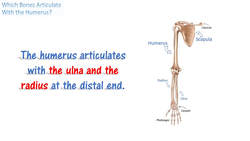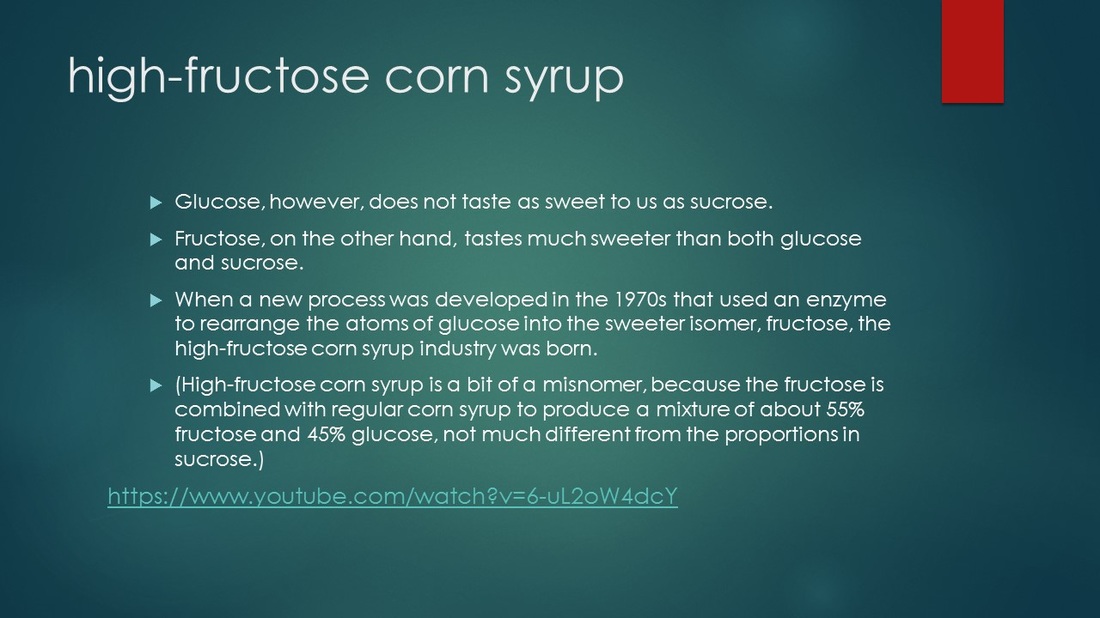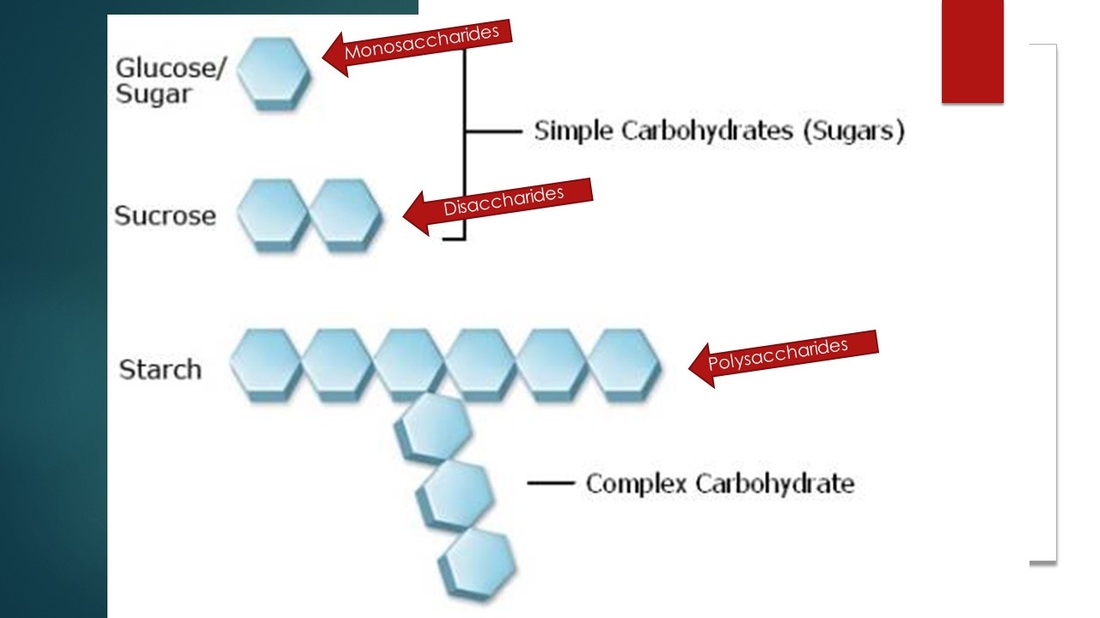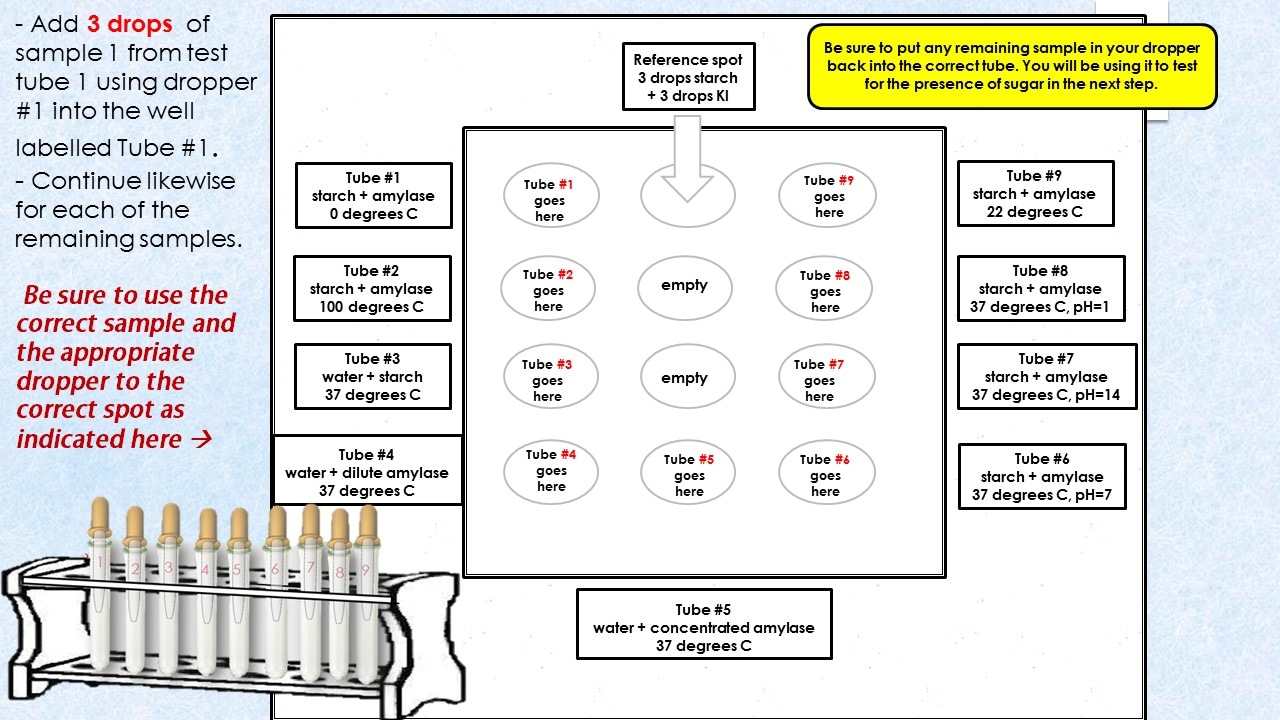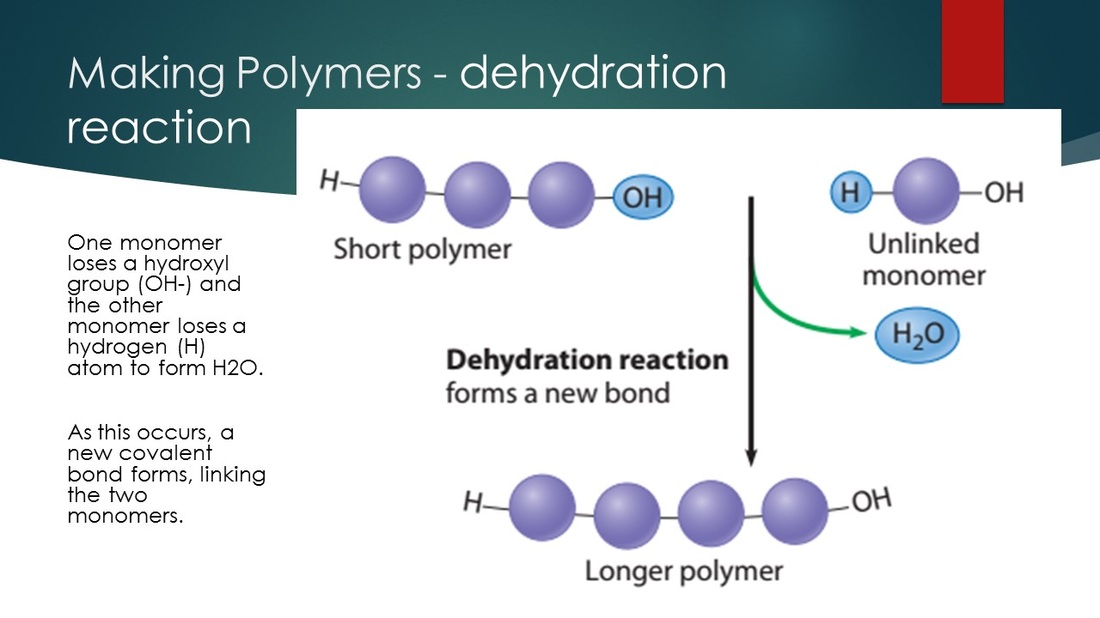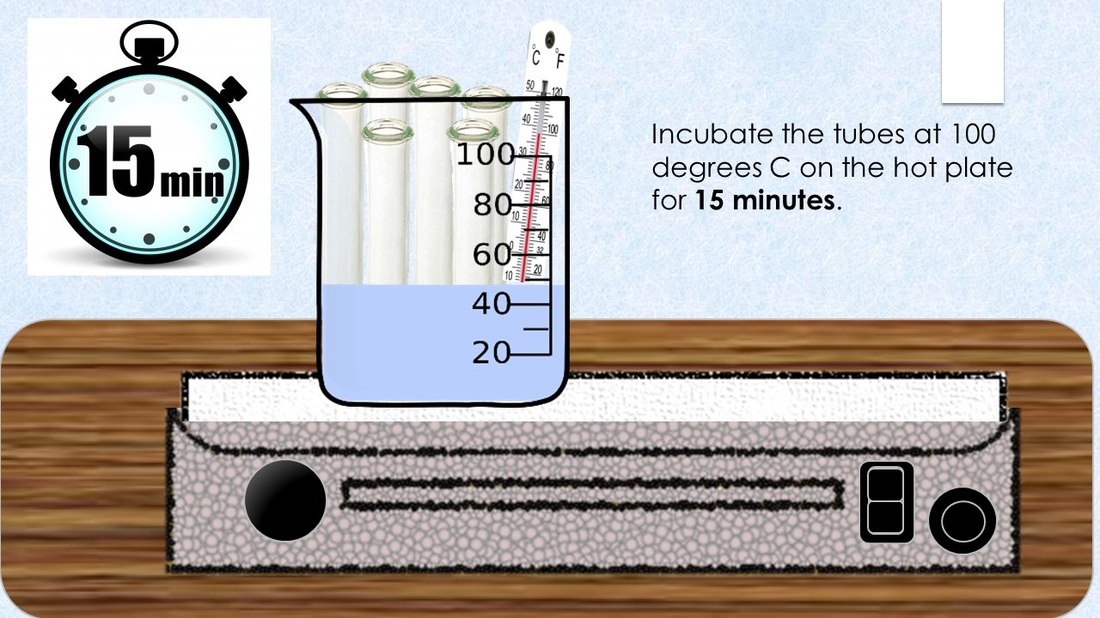| enzymes.pdf | |
| File Size: | 3108 kb |
| File Type: | |
ENZYME LAB
The Effects of Temperature, pH and Concentration on Amylase Function
|
| ||||||
YOU CAN CLICK ON THE SLIDE SHOW BELOW TO PAUSE, PLAY, OR NAVIGATE BACK AND FORTH!
AMYLASE is an enzyme that is found in our bodies that functions to help the body in the digestion food. Amylase is found in saliva and in the pancreas. Amylase catalyzes the hydrolysis (breaking down) of starch, glycogen and related polysaccharides into more simple and readily usable forms of sugar.
In this lab you will explore the effects of concentration, pH and temperature on amylase's ability to break down starch into sugar.
AMYLASE has an OPTIMAL RANGE of pH and Temperature which is pH = 7 (neutral) and 37 degrees C. These are the same conditions that exist in our bodies. When an enzyme is within its Optimal Range or conditions, it will be able to catalyze reactions at its fastest rate.
Enzymes are not products or reactants in the chemical reaction, they just assist (catalyze) the reaction by making it proceed much more quickly than it would in the absence of the enzyme. For this reason, amylase can be used again and again! Enzymes are a special class of proteins. In the absence of the enzyme, the chemical reactions of digestion would occur at such a slow rate, the body would essentially starve to death. The digestive system would take about 50 years to process just one meal, if it did not have the needed enzymes to speed up the process.
In this lab you will explore the effects of concentration, pH and temperature on amylase's ability to break down starch into sugar.
AMYLASE has an OPTIMAL RANGE of pH and Temperature which is pH = 7 (neutral) and 37 degrees C. These are the same conditions that exist in our bodies. When an enzyme is within its Optimal Range or conditions, it will be able to catalyze reactions at its fastest rate.
Enzymes are not products or reactants in the chemical reaction, they just assist (catalyze) the reaction by making it proceed much more quickly than it would in the absence of the enzyme. For this reason, amylase can be used again and again! Enzymes are a special class of proteins. In the absence of the enzyme, the chemical reactions of digestion would occur at such a slow rate, the body would essentially starve to death. The digestive system would take about 50 years to process just one meal, if it did not have the needed enzymes to speed up the process.

